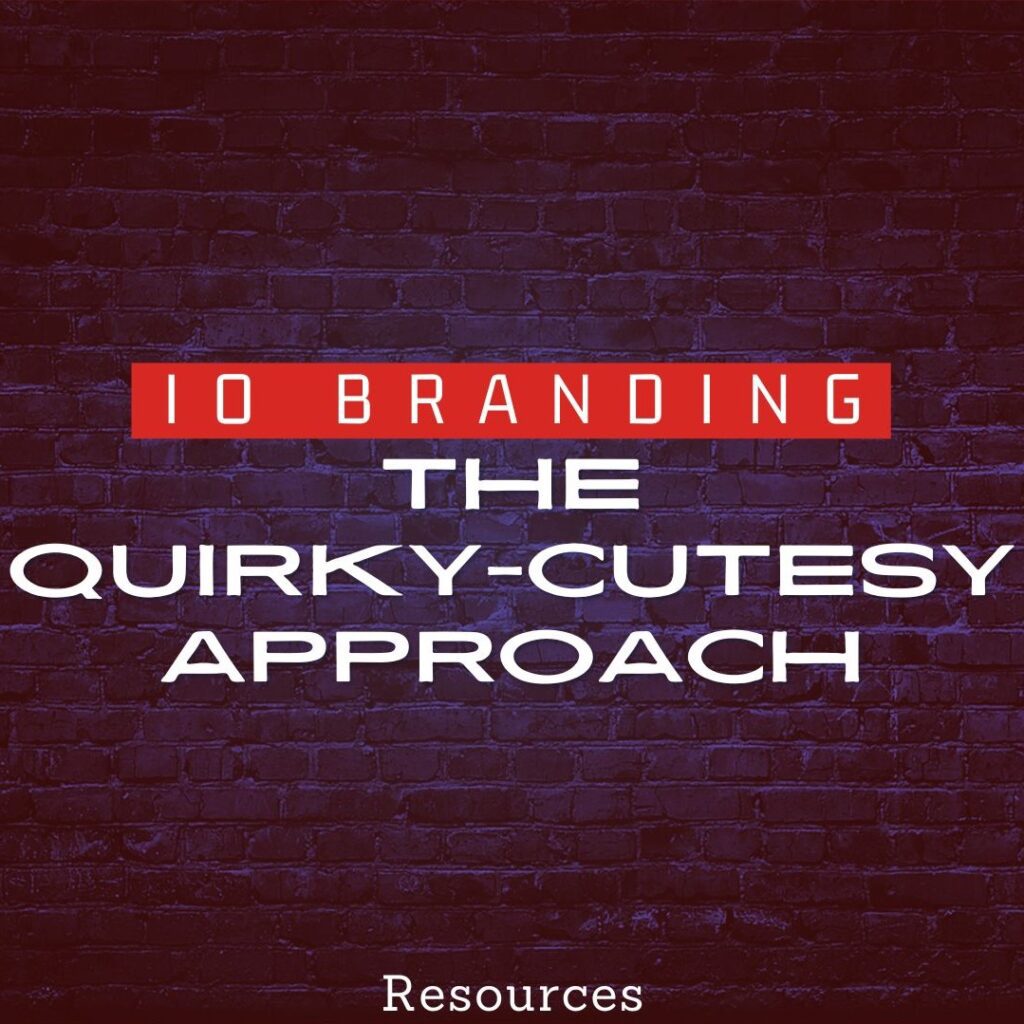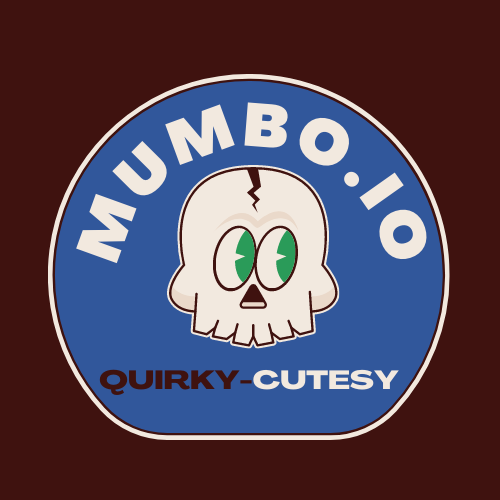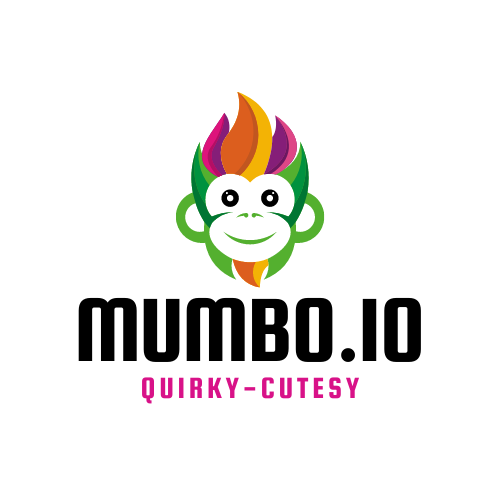IO Branding Tricks — The Quirky-Cutesy Approach
This is the third in a series of in-depth articles on how to successfully brand with an .IO domain.
In Part I, we looked at ‘quirky’ brand plays that have proven successful.
Part II focused on the ‘cutesy’ approach to .IO branding.
In Part III below, we dive even deeper, scoping out the precise mechanics and connotation underlying brands that use a combination of these two takes — the ‘quirky-cutesy’ approach!
What is quirky-cutesy .IO branding?

As noted in the first two piece using a domain on the .IO extension as your brand, it is really quite a flexible domain extension. Endowed with classical lines, .IO can accommodate multiple types of brand composition. We’ve already covered two approaches with a proven track record in the .IO space, the ‘quirky’ and ‘cutesy’ approaches. This was done in more cursory fashion, as it was better to cover several samples from these two categories in order to provide ample example of the style of branding we were exploring.
But, in this post we will focus on a hybrid of the ‘quirky’ and ‘cutesy’ approaches, concentrating on just a couple of domains. This will allow us to meticulously tease out the nuances of this dynamic. Where the impact of the second-level domain (SLD) — the characters appearing to the left of the dot — and the overall impression of the domain is heightened by the simplicity of the .IO extension and the steady poise it brings to proceedings.
If you think a domain misses its mark due to potential user confusion, it’s unlikely to be a good name
Really getting down into the weeds on how top .IO domains pull off their show will hopefully provide some guidance, or, better yet, food for thought, when you are searching for your ideal .IO brand. Serving up as it does apt example of how astutely leveraging the .IO extension to bring a name nicely together can lead to enhanced gains all round. With .IO acting as the cohesive gel in a brand that otherwise may just not work.
One-word ‘brandable’ style domains are most useful for showing the quirky-cutesy style. To this end, we have chosen one word that is in the dictionary (‘prexy’) and another that’s also in there, but not as a standalone noun (‘mumbo’).
Example of a quirky-cutesy .IO brand: Prexy.io
The Miriam-Webster dictionary has ‘prexy’ as a slang word of origin unknown meaning ‘president’. It’s a popular term for referring to the president of a college in particular.
So, if we had to biohazard a guess, perhaps it has come down to us as a kind of mock Latin play on many titles used in Ancient Rome, some of which still live in on fraternities across the US. (Think ‘Rex’ – King, ‘Dux’ – Duke.)
The Quirky part of Prexy
Is the single-word brand ‘prexy’ a quirky proposition? Well, yes, it’s quirky, but not the kind of quirky that instantly clicks it’s not ‘clean quirky’ like Mumbo.io or Gnash.io, for example. As a brand, Prexy is a little more mysterious than that and at first glance the uncommon structure of the word may present a problem to securing user recognition.
Domain branding advice — the Nuts and Bolts
As a general branding rule, if you think a domain misses its mark due to potential user confusion, it’s unlikely to be a good name. So, a word of advice, save yourself millions in marketing budget and years of explaining to your customers (the ones that do make it to you!) exactly what is up with your internet home. Scrap it and take another.
As goes for all good writing, forcing the reader of a domain name to work too hard to get the word(s) will place you in a battle that you didn’t need to fight. But whereas a novelist has (potentially) an entire book to get the reader back onside, a domain writer has but a handful of letters do hit their mark.
Life/your URL is too short for it to only be “okay”
Life/your URL is too short for it to only be “okay”. If you’re a brand aspiring to grander things and the best you can say about your domain is that works more or less “fine”, you are encouraged to see what else can be brought to the table here – and where your more domain-savvy competitors are likely picking seriously low-hanging fruit.
There are exceptions, but if it’s not there, it’s just not there.
Because the domain is an integral bolt in the structure of the modern business. When it does it’s job, you won’t know too much about it. But when it does not, things may start to get a bit shakey! A situation which, had you had access to educated yourself and spent a little more generously you could have avoided!
“Never venture too far from the slush pile”
Viewed in this light of what domains cut the muster, Prexy.io should surely be tossed into the slush pile.
Right?
Well, maybe. It’s a matter of taste. But more importantly, it’s a matter of vision.
If you list your 10 favorite novels of all time, you can be sure that 9 of them were rejected by at least one publisher. And it is likely that 2-4 of them languished in the slush piles of several publishing houses before being ‘discovered’ (by someone actually able to do their job).
That’s between 20% and 40%. That’s a serious margin to target!
Develop your eye and while the rest are bidding their brains out for ‘sure things’ (with a suitably solid price tag), you can leverage insight and understanding to skirt the lot of them. If you’re also open-minded enough, that is.
Asked by an interviewer for his one key tip for success in the literary game, Scribner editor Maxwell Perkins — best remembered for discovering authors like Ernest Hemingway, F. Scott Fitzgerald and Thomas Wolfe — said “Never venture too far from the slush pile.”
A more enigmatic domain entices and engages the user upon first viewing. They want in, but they have to open the door themselves.
The chase is on
So it is that what Prexy.io lacks in instant recognition, we would argue it makes up for in enigmaticness. The viewer feels they kind of get it, but wants to know more to be sure. They’re not served the full Roman banquet, only the tasty starters and the fish dish. Thus creating an empty space for a more participatory engagement, which would not be possible had the domain name greeted, fed and watered them all within the blink of an eye.
We are humans, we want (at least the pretence of) the chase.
In this light, Prexy as a more enigmatic domain does a super job of enticing and engaging the user upon first viewing. They want in, but they have to open the door themselves.
When I say ‘mumbo’, you say ‘jumbo’
What’s more, if our interpretation here is sound, this dynamic can only exist precisely because Prexy.io refuses to serve straight up, like the other main example used in this article, Mumbo.io.
Of course, this cracker of a domain undoubtedly also works, as a top brand should, instantly transporting the viewer in one way or another. You hear ‘mumbo’, your mind says ‘jumbo’. Your brain registering the lovely curly letters throughout. What could easily be a snake starting in ‘m’, slinks its way through a ‘u’ shape and back to ‘m’; the interplay between the two o’s. Yes, it’s a classy name, we get that.
But the Prexy.io play is completely different. It also gets the viewer through the door, but it works with very different tools to achieve this.
Instead of slinking all over you, Prexy.io flashes you an enigmatic smile, then quickly averts its gaze.
Electric cake mixers (oof, the search engine algo is sure to hammer us for this subheading. But popX’ll be flush with kitchen appliance affiliate dolladollas this time next year though, you just watch)
Instead of slinking all over you, Prexy.io flashes you an enigmatic smile, then quickly averts its gaze. You suddenly find that you’ve a choice to make. You wouldn’t mind some more of that attention, you think, but how to get it?
If the tactic comes off, as we feel in this case it does, you could go so far to say that Prexy.io is more successful than Mumbo.io in establishing a relationship with new users. The reasoning here is that the name Mumbo.io is so fluid and flexible that it would make a great choice for many things. But the shade of those things would likely fall within a certain range.
This is because while Mumbo.io feels like it is kind of ‘rolling’ in its brand proposition, in motion and bouncing along the scene, it is more likely than not to roll in a general direction, move into a certain range of situations. If for no other reason than it will be used by a brand that wants a clean, rolly kind of name!
The slight tilt one way or the other can of course be crucial to your brand proposition, but this point on the certain range of the brand holds true. Yet, if you can capture an elegant, flowing target word that nails the criteria for pulling off the quirky-cutesy approach we’re outling here, then subtly bringing out the either of the constituent elements of this branding approach works a treat. You can also help embed this tilt by designing a well-suited logo.
Above are mockups of three different Mumbo logos featuring a monkey, so you can see what we’re getting at here. Moving from left to right, they show a quirky-cutesy brand frontface that is 1) slightly more quirky, 2) slightly more cutesy, and 3) about equal measure quirky and cutesy. One suspectes that we’re into nuance here, again, so it’s also a matter of taste. No miffed mailings claiming we done that lovely little monkey an awful disservice, please!
It’s also a very targeted distinction we’re trying to make here and difficult to tangibilize. Moreover, as noted in relation to four-letter CVCV brands like Dali.xyz, it’s also a kind of self-fulfilling prophesy, as the more people lean toward brand propositions that work (in/because of a given way), the more ubiquitous they become (and work, the neural pathways of consumers indented into the perfectly commodious groove!). Especially since we’re all trying to brand within the set parameters of how modern marketing works — and the delimited space of a URL, on a set thing called the Innernet.
But let’s put it this way, would ‘mumbo’ work as brand of electric cake mixers?
A wholesale nursery for plants & saplings?
Russia’s leading producer of garden furniture?
A deal of quirk about it (oof, ouch!)
The word ‘mumbo’, too, is by no means completely transparent and Mumbo.io is another prime example of a well-executed .IO brand. It also has a deal of quirk about it. But wider usage of ‘mumbo’ in common parlance means that it is more likely to be familiar to the user than ‘prexy’.
Plus they’re used to this construction in English — ‘jumbo’, ‘dumbo’ (not to mention ‘mambo’, ‘mamba’ and the rest). The user visits that site for the first time and says:
“Ah, that’s what Mumbo.io does. Makes sense alright.”
But ‘prexy’? If they don’t know the word already, in their mind it could be anything under the sun!
And then what happens?
…Bam! Upon clicking the link, an imaginative space has been opened in the user’s mind. In that split second while Prexy.io loads, the tiniest of portals has opened. Through which Prexy.io now smoothly slips.
“Hmm, I see, that’s Prexy.io ..interesting… I wonder what..”
Boom! A link between this very singular piece of vocab has now been made in the mind of the user. And because of its uniqueness as a verb and the unveiling process we’ve walked through above, a link that arguably is more distinct and evergreen than what Mumbo.io can achieve.

If you get minor shades of extra nuance on your side, then why not?
Its own little patch of cerebral real estate (yiiiiikes, and that’s the ballgame)

If you pull it off, where Mumbo.io may soon have returned back into the swell of mambo, bambo, bambi associations the user carries around in their head, Prexy.io is in there somewhere off all by itself. Sitting pretty on its own little patch of cerebral real estate.
(“No, mam. The warranty on your Prexy 9800-B does not cover internal charring of the cake you made for your ‘Son’s Big Day’.”
“See you later, hon. I’m just heading down to Prexy’s to pick up the cactuses.”
“Goot aftanune, you haf reacht Prexy Mebel.”)
Now, don’t get us wrong, we’re talking here of absolute microshades of meaning and connotation. But this is what we do. We worry about the infinitesimals, so that the owners of popX domain don’t have to.
Because if you get minor shades of extra nuance on your side, then why not? As in life, get your name in any many hats as is necessary to accrue! Who knows what you’ll win (or who you’ll meet)!
Your brand is set up to live for many years to come and will ideally take on a life of its own, so why shouldn’t you look to give it the best start in life? Reserving whatever little microchambers of meaning you can.
Don’t worry either if you feel such in-depth shading may not be relevant to your brand. What we see in these cases, for example, may be at least on the conscious level, completely off the radar of both the owner and users of Prexy.io and Mumbo.io. The result of these eyes having parsed through literally 100s of millions of domain names in this life.
Alternative views
Another person might point out that the word Prexy isn’t all that bizarre, it’s more or less up there with Mumbo in the grand scheme of things. I mean, after all, when was the last time you headed down to the store to buy a pack of either? Or read about the latest mumbo-prexy scandal everyone is up in arms about?
And you’d be right. They are both quirky words, but, as we posit, a different kind of quirky — if you will, “quirky quirky” (Mumbo) and “quirky mystifying” (Prexy). Indeed, this is one of the big reasons why Prexy.io works. It’s not too far from Mumbo.io, and doesn’t feel totally weird as a word or just plain confusing.
Rather while ‘prexy’ does take a half step towards potentially losing the crowd, it has enough to keep them onboard and bring them through to the fascinating world of Prexy.io. Where by the time they get there, that extra risk of potentially losing the user along the way has been rewarded by the extra element of intrigue injected into the relationship.
A beautiful, soft syllable that also happens to be your mother’s name
The Cutesy part of Prexy.io
That’s the quirky part of the equation covered, fair enough. But what about the cutesy part? Well, if you’ve ready our in-depth article on using .IO extension to develop a cute, playful brand (Part II of this Branding Tricks for .IO series), you’ll already know that there are certain tricks that the .IO extension allows the owner to play..
Combing out the complex for the cutesy
Composed of just two tiny, teensy ickle sweet mini-vowels* there at the end of the line, .IO is ideal for such brands.
Taking our two examples, Mumbo.io can certainly be considered cutesy. Begun by a beautiful, soft syllable that also happens to be your mother’s name and ended with a cute little baby burp, MumBo is nice to say and nice to hear. If you told a stranger to the land that mumbo is the largest producer of eco-friendly, 100% natural fiber baby diapers around these parts, they’d more likely than not nod their head in agreement. For it is surely so.
Prexy.io on the other hand is a far more complex proposition. Not only does it start with a plosive constant, this extirpation of breath is elongated through a letter that isn’t all that super soft — ‘r’. The ‘pr’ digraph formed by the two opening letters is then quickly followed by another couplet that also verge on sounding kind of hard: ‘-ex’.
At this point in proceedings, any talk of vying for that leading position in the diaper market is looking a bit dicey.
But, wait! It’s her! She’s on the way! Our savvy sayvior!
P-R…(Here she comes)
..E-X (to sayve the day!)…YYYYYYYYYYYYYYYYYYYYYYYYYY!
…PREXY!
Wow, not too harsh at all, Mr. Prexy!
Hmm, I do actually quite like saying that — preks-eee..
Phew, that was too close. Glad we got through that one.
Dot io, aka Mr. Fantastic, allows us to pull off a domain that meets both of the criteria for this branding play
A survey of potential alternative extensions for our test subject ‘Prexy’
But wait! In all our eagerness to capture a snappy yet soft and subtly complex word, we’ve forgot about something!
Jeepers, egad and by crikey, we’ve left out the extension!!!
Ooops, that’s true. We’d better be careful. If we choose the wrong one, all our lovely sound poetry will have come to naught.
Now, let’s see..
Prexy.com?
Hmm, maybe, but it’s really pronounced ‘dot kom’; when you think about it, and so may be just be one hard(ish) syllable too far. In our quest for cutesy, the only reason we got away with the ‘ex’ in the middle there was because of the lovely ickle ‘-y’ at the end. But ‘com’ will be read as yet another non-soft syllable — one that we’ve no way of smoothing. What’s more, it will undo the work of the ‘-y’, heightening the hardness of the ‘ex’ syllable we’d gotten away with. I vote against.
Prexy.net?
Another maybe, I’d say. It’s not bad and you gotta like the closed vowel of the extension, it shortens the whole composition. But still no cigar — just try saying it a few times out loud, it’s pure face yoga.
On that point, what about widening the net a little further on this one? Agreed.
Prexy.co?
Same hardish sounding problem as com, but even more so — because it’s shorter and there’s no space for the ‘m’ to at least soften the edge a little on the way out. Has a nice enough ring to it, but doesn’t facilitate the awe and wonder mouth shapes we’re looking for. Because the keyword may not too familiar to listeners, we want to give them a longer window of opportunity to engage with and place the word. Used with this particular keyword, ‘co’ could easily come off as a grunt or the start of a cough, potentially casting confusing or pulling down the whole shebang.
Well, that’s us nearly out of ideas..
So, how about…
Prexy.xyz?
Excuse me, Xir. You xeem to ‘ave coughed xis up. Oh my, do Xcuse!
Prexy.club?
Well, the club part is nice there at the end. But by the time you get there, it’s half way through digesting the target word.
Prexy.ryukyu?
Heard of him! Scrabble champ the last three years running.
Prexy.xxx?
Best stop here.
(And before you ask, yes prexy.sexy is available (directly from the registry). USD 13k annual renewal fee, with a free fishing rod issued to each of your users. And a pair of bifocals after the end of the fifth year — i.e. $78,000 in (inflation permitting).
The (.IO-endowed) power of Prexy
So, having looked at some alternatives, why, I hear you say, does Prexy.io just somehow work?
Well, if you’ve gone through our the Cutesy Approach deep dive, you already know the reason. But I guess we can provide a quick rundown here too..
It’s the subtle, yet playful character of the ‘i’ and the ‘o’, or course! Two open vowels which if, appropriately paired, can help soften and smoothen what has gone before. And thus, if used adroitly, capable of injecting a delicate sense of ease and reliability into the domain equation overall.
Prexy is a pretty busy word when it comes down to it, but the ‘-y’ closes it up neatly. And just in time for the .IO to step up and ensure a sense of order in proceedings. In the final reckoning, this helps to make Prexy.io a pretty accomplished composition as a whole.
Softened are the hints of harshness that another extension may well have picked up on; pushing the construction farther in that direction and ruining the entire affair.
Along the way, dot io, aka Mr. Fantastic, allows us to pull off a domain that meets both of the criteria we set out with.
A brand that is quirky. Yet a brand that is cutesy.
…A brand that’s quirky-cutesy!
* Too bad English doesn’t have a diminutive form, perhaps we can introduce a loanword for use in the domain space …vowelini? vowelchens? voweleens?
Wharfland.com
The THIRD part in a series of in-depth articles on how to successfully brand off an .io domain.
Read about the quirky-cutesy approach to dot io branding!
Oust.xyz
The THIRD part in a series of in-depth articles on how to successfully brand off an .io domain.
Read about the quirky-cutesy approach to dot io branding!


